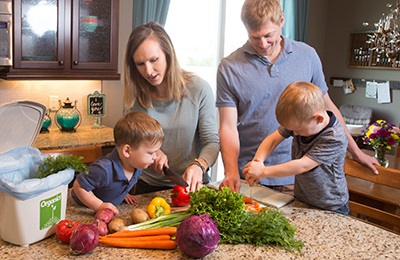Working to eliminate plastic waste

Hennepin County recently joined the U.S. Plastics Pact to build on county efforts to support residents and businesses who want to take action on plastic waste and pollution.
The collaboration of plastic packaging producers, brands, retailers, and waste management companies along with nonprofit organizations and government agencies will bring the necessary stakeholders together to develop solutions and implement coordinated initiatives.
Ensuring plastics never become waste
The U.S. Plastics Pact is an initiative led by The Recycling Partnership and the World Wildlife Federation, as part of the Ellen MacArthur Foundation's global Plastics Pact network, which has similar initiatives underway in the U.K., France, Portugal, South Africa, Holland, and Chile.
The goal of this work is to ensure that plastics never become waste by:
- Eliminating the plastics we do not need
- Innovating to ensure that the plastics we do need are reusable, recyclable, or compostable
- Circulating all the plastic items we use to keep them in the economy and out of the environment
To accomplish these goals, signatories commit to making efforts toward four national targets by 2025.
To support progress toward these targets, stakeholders agree to actively collaborate in work groups, grant-funded pilot projects, and research. They will also share best practices and legislative expertise, engage with residents, and distribute news and information.
The problem with plastics

More than one-third of plastics are used for packaging, including food packaging, grocery bags, and straws. Plastics are common due to their low cost, durability, and versatility. Their use has increased twenty-fold since the 1960s and, without action, will continue to increase.
Plastics are problematic because:
- Plastics are hard to capture and recycle. In Hennepin County, less than half of plastics are recycled.
- Most plastics are made from oil and gas. About 4% to 8% of the world's oil product is for plastics, and most plastics are thrown away after a single use.
- Plastics collect in our lakes and rivers and break down into micro and nanoplastics. These pose threats to birds and wildlife and unknown concerns for human health.
- Micro and nanoplastics have been found in our soil, water, and food. About 60% of microplastics come from high-income countries in the form of tire dust, pellets, textiles, and personal care products.
Getting to zero waste
The county is pursuing this initiative because it supports the transition to zero waste faster and helps to achieve the goals outlined in the county’s solid waste management master plan. Reducing plastic waste will also contribute towards the county meeting its greenhouse gas emission reduction goals.

